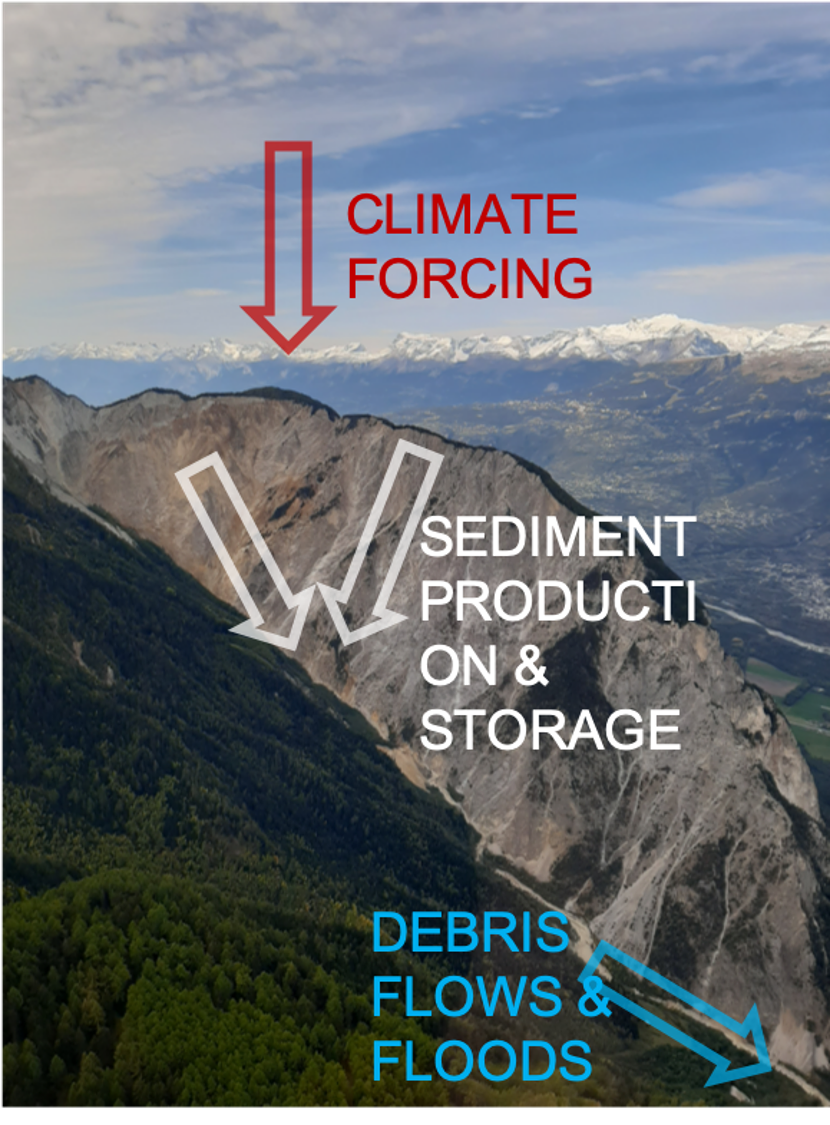Mass wasting processes in the context of landscape evolution
At one of our largest spatial scales of investigation we study the evolution of mountain topography as a function of sediment production and transport. To achieve this, we investigate the influencing factors for sediment production in the headwaters of alpine catchments, the gravitational processes moving the sediment downstream, and the impact of this sediment on the profile and planform morphology of the river network (Figure 1).

Contact
Professur für Ingenieurgeologie
Sonneggstrasse 5
8092
Zürich
Switzerland
Another focus lies on predicting landslide events. We study rainfall triggering thresholds, which is the most common used method to design early-warning systems, as well as landslide and debris-flow triggering in a larger geomorphological context, where sediment production, storage and mobilization play important roles. This is necessary to predict possible changes due to climate change. Therefore, we work towards a better understanding of landslide initiation and the associated downstream impacts.

Contact
Professur für Ingenieurgeologie
Sonneggstrasse 5
8092
Zürich
Switzerland